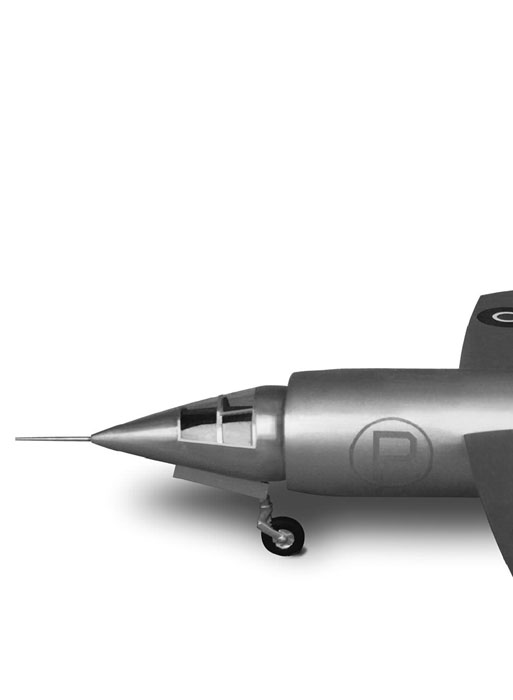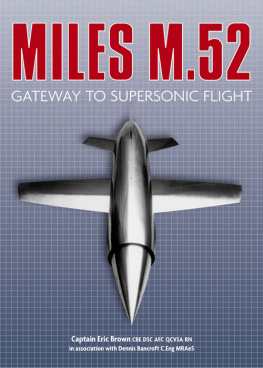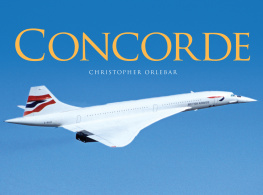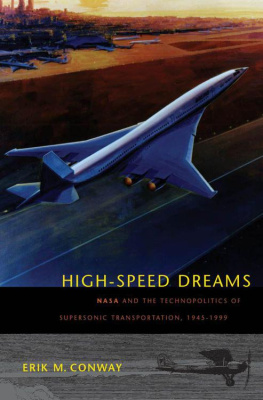

The 1:48 scale model of the M.52 which appears on the title-page was built by Keith Sherwood and presented to Dennis Bancroft.
Contents
List of appendices
Appendix 1
Preliminary note on Miles-Power Jets very high-speed aircraft by Group Captain Frank Whittle, 23 October 1943
Appendix 2
Memorandum from Norbert Rowe to Air Marshal Ralph Sorley, 11 November 1943
Appendix 3
Memorandum from Dr H.M. Garner to Norbert Rowe, 3 January 1944
Appendix 4
Memorandum from J.E. Serby to Dr H.M. Garner, 2 August 1944
Appendix 5
Memorandum from Dr H.M. Garner to J.E. Serby, 4 August 1944
Appendix 6
The Churchill Directive. Priorities for Research and Development, 15 January 1945
Appendix 7
Memorandum from Sir Ben Lockspeiser to Air Commodore G. Silyn Roberts, 20 February 1946
Appendix 8
Miles E.24/43: Latest known aerodynamics, spring 1946
Appendix 9
Extract from White Paper The Supply of Military Aircraft, February 1955
Appendix 10
Definitive list of M.52 models to various scales, by D.S. Bancroft, March 2000

T his is a book that tells the inside story of what should have been for Britain a supreme triumph in the annals of aviation the breaking of the sound barrier to attain supersonic speed in a piloted aircraft, but it was not to be.
The standard bearer for this venture was the Miles M.52 research aircraft, arising from an exceptionally brief specification issued in 1943 by the Ministry of Aircraft Production, and assigned, to the astonishment of many, to one of Britains smaller aircraft manufacturers, but one with a reputation for innovatory thinking. However, as a safeguard the project was to be monitored by the Royal Aircraft Establishment at Farnborough (RAE), which would also provide a test pilot with wide jet flying and transonic flight testing experience.
Well, they always say if you want something to fall into your lap, youve got to be in the right place at the right time. It just so happened that I was a young, but fairly experienced, test pilot in the Aerodynamics Flight and the High-Speed Flight at RAE in 1944, when I was told I was nominated to be the RAEs pilot for the M.52 project.
I realised I could only discuss this within a very limited circle, as the project was classified TOP SECRET , and this new circle contained some very senior figures in British aviation and politics. Although the majority of these showed strong support for the project, there was a hard core who had genuine concerns about the high risks associated with it.
However, a new factor cast its shadow over the project the intrusive interest of the Americans, with the full support of the British Government. The American interest was understandable, because the M.52 had some very innovatory features a bi-convex wing, an all-moving tailplane (flying tail), a pilot escape capsule and a revolutionary jet engine designed by Frank Whittle. From this point the M.52 story began to assume the nature of a conspiracy, and indeed one that today remains unsolved.
The dnouement was the tragic cancellation of the M.52. This drastic action was totally unheralded, caught everyone in the project team absolutely by surprise, particularly as the aircraft was over 90 % completed to flight status. For me this meant deep disappointment, total frustration, burning anger, and heartfelt sympathy for other members of the team. For our proud nation it meant betrayal of our leading position in highspeed flight technology.

I wish to acknowledge the assistance given to me in the writing of this book. In particular Dennis Bancroft, Peter Amos (The Miles Aircraft Collection) and Josh Spoor. Each of them has devoted many years to researching the mystery of the cancellation of the contract for the aircraft which would have ensured that Britain was the first nation to break the sound barrier.
As Chief Aerodynamicist on the M.52 Dennis Bancroft is in an unique position to confirm the technical details of the planes innovatory design, which Miles conceived in a remarkably short time. His wife, Elizabeth, has been invaluable in searching out and assembling the relevant papers.
Extra information has come from Jeremy Miles, son of F.G. and Blossom Miles, from Jean Fostekew (Museum of Berkshire Aviation), Jim Pratt, George Miles son-in-law, Rod Kirkby.
Professor Brian Brinkworths paper On the aerodynamics of the Miles M.52 (E.24/43) a historical perspective in The Aeronautical Journal of the Royal Aeronautical Society is a wonderful technical assessment of the Miles achievement; his conclusion is that Miles made an astute appraisal of the available information, and conceived a forward-looking machine, that was well fitted for its intended purpose the most plausible estimates of available thrust and drag would indicate that sonic speed would not be exceeded in level flight, though speeds well into the supersonic range would be obtained in a dive. An opportunity to acquire a promising and most timely research tool was lost in its cancellation.
The chronology of events on pages 173 to 212 was researched by Elwyn Blacker.
| A&AEE | Aircraft and Armament Experimental Establishment, Boscombe Down |
| AD/ARD | Assistant Director, Armament Research Department, MoS |
| AM | Air Ministry |
| ARC | Aeronautical Research Committee |
| ARD | Armament Research Department |
| CRD | Controller of Research and Development, MAP |
| DAF | Directorate of Aircraft Factories |
| DARD | Director of Aircraft Research and Development, MoS |
| DD/RDA | Deputy Director, Research and Development Administration, MAP |
| DDSR | Deputy Director of Scientific Research, MAP |
| DFS | German Research Institute for Glider Flying |
| DGP | Director General of Production, MoS |
| DGSR | Director General of Scientific Research, MAP |
| DGTD | Director General of Technical Development, MAP |
| DSP | Director of Special Projects, MAP |
| DSR | Directorate/Director of Scientific Research, MAP |
| DTD | Directorate/Director of Technical Development, MAP |
| GTTACC | Gas Turbine Technical Advisory and Coordinating Committee |
| ICAN | International Commission for Air Navigation |
| MAP | Ministry of Aircraft Production |
| MoS | Ministry of Supply |
| NACA | National Advisory Committee for Aeronautics (US) |
| NGTE | National Gas Turbine Establishment |
| NPL | National Physical Laboratory |
| RAE | Royal Aircraft Establishment, Farnborough |
| USAAF | United States Army Air Force |
| USAF | United States Air Force |
Next page













